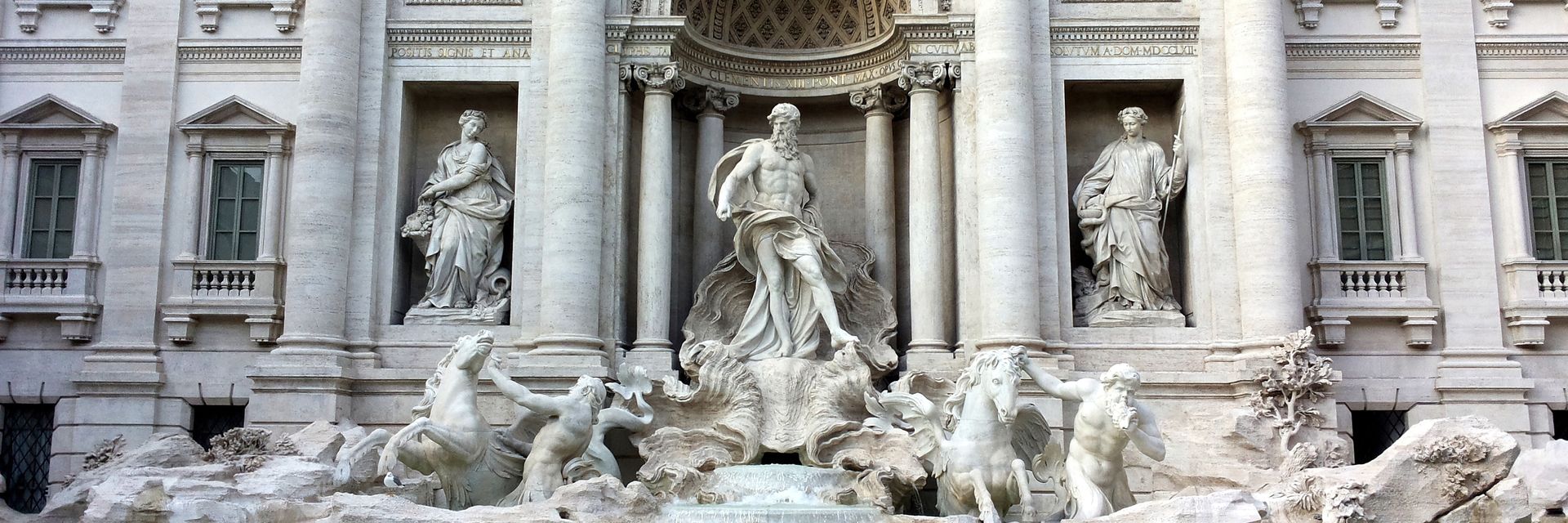Rome is chock full of rich history and stunning architecture. But in such a huge city, which sites are the most popular – and most surprising?
◊
1. The Colosseum
The Colosseum is one of the world’s most iconic landmarks and attracts millions of visitors annually. The ancient amphitheater, built nearly 2,000 years ago, was used for gladiatorial contests and other public spectacles.
Did You Know? Visiting Rome, you might find little pieces of the Colosseum everywhere. The historic landmark was once used as a source of building materials. After the fall of the Roman Empire, many of the stones and marble slabs were removed to construct new buildings and churches throughout the city. It’s believed that some of these materials were even used in the construction of St. Peter’s Basilica in Vatican City, our next destination . . .
2. The Vatican Museums
The Vatican Museums are home to some of the world's most famous art collections, including the Sistine Chapel, which features the renowned frescos painted by Michelangelo. But not all of the Vatican’s art is rated “PG.”
Did You Know? It’s been rumored that the Vatican Museums house the world’s largest collection of pornographic images. This is an exaggeration, but the Vatican is home to erotic art dating back to the 1500s; this small, ancient collection isn’t available to the public. Located in the Papal Apartments, it is found in an old bathroom decorated by the Renaissance master Raphael. Commissioned by Bernardo Dovizi of Bibbiena (better known as Cardinal Bibbiena), the “Stufetta della Bibbiena” is home to murals that would make even the most sophisticated pope blush. The erotic and pagan imagery has been ignored, covered, defaced, and censored, but it remains there today.
For more on Ancient Rome, check out the MagellanTV documentary Hidden History of Rome.
3. The Pantheon
The Pantheon is a well-preserved ancient temple that dates back to the Roman Empire. It is renowned for its freestanding dome, one of the largest of its type in the world.
Did You Know? The Pantheon’s famous dome was once fully covered in bronze tiles. While it still stands, its original tiles were stripped and melted down to make cannon for the Castel Sant’Angelo fortress. But don’t worry, you’re not out of luck if you’re searching for bronze: The original bronze doors still stand, and they are among the oldest and largest doors on Earth, dating back to around 115 CE.
4. The Roman Forum
The Roman Forum was once the center of political and social activity in ancient Rome. Today, visitors can explore the ruins of temples, government buildings, and public spaces.
Did You Know? The Forum was not always the epicenter of politics and society. Located in what was originally a swamp, it is an example of the ancient Romans’ innovative engineering. To make the area habitable, they drained the area and constructed a network of sewers to keep the water away. However, after the fall of the Roman Empire, the Forum was abandoned and used as a pasture. (Today, we might call the return to a more pastoral state “rewilding.”) It wasn’t until the 18th century that measures were taken to restore, preserve, and reintroduce the historic site.
5. The Trevi Fountain
The Trevi is one of the most famous waterworks in the world and is a popular destination for visitors to Rome. Legend and song say if you throw coins into the fountain, you will be guaranteed a return trip to Rome.
Did You Know? It’s estimated that around €3,000 (US$3,165) is thrown into the fountain each day. With that many coins being tossed in, a bit of maintenance is required. The Trevi Fountain is emptied and cleaned every year. But just because your coin is plucked from the fountain doesn’t mean someone’s wishes won't be answered – all of the collected coins are donated to charity.
Ω

